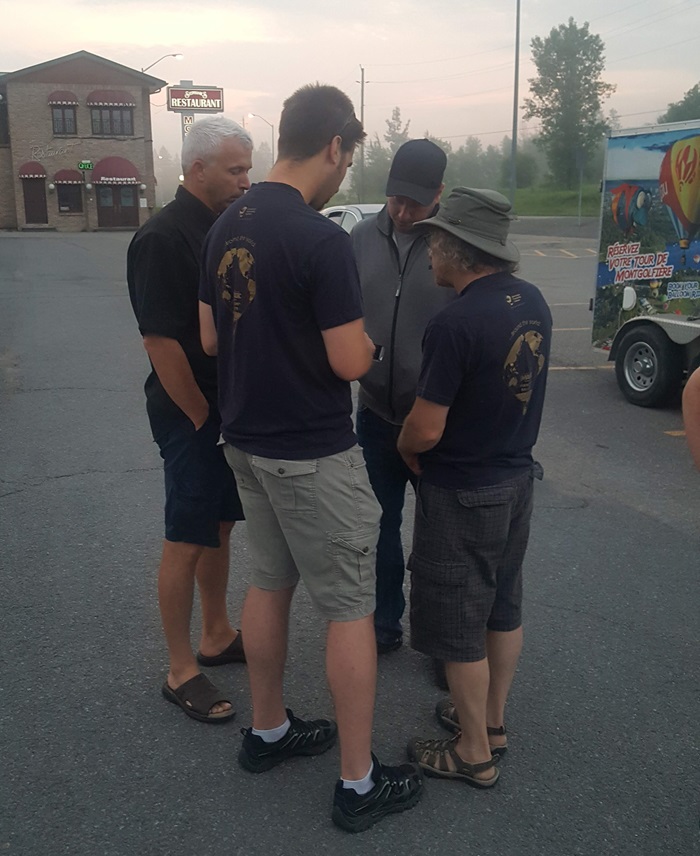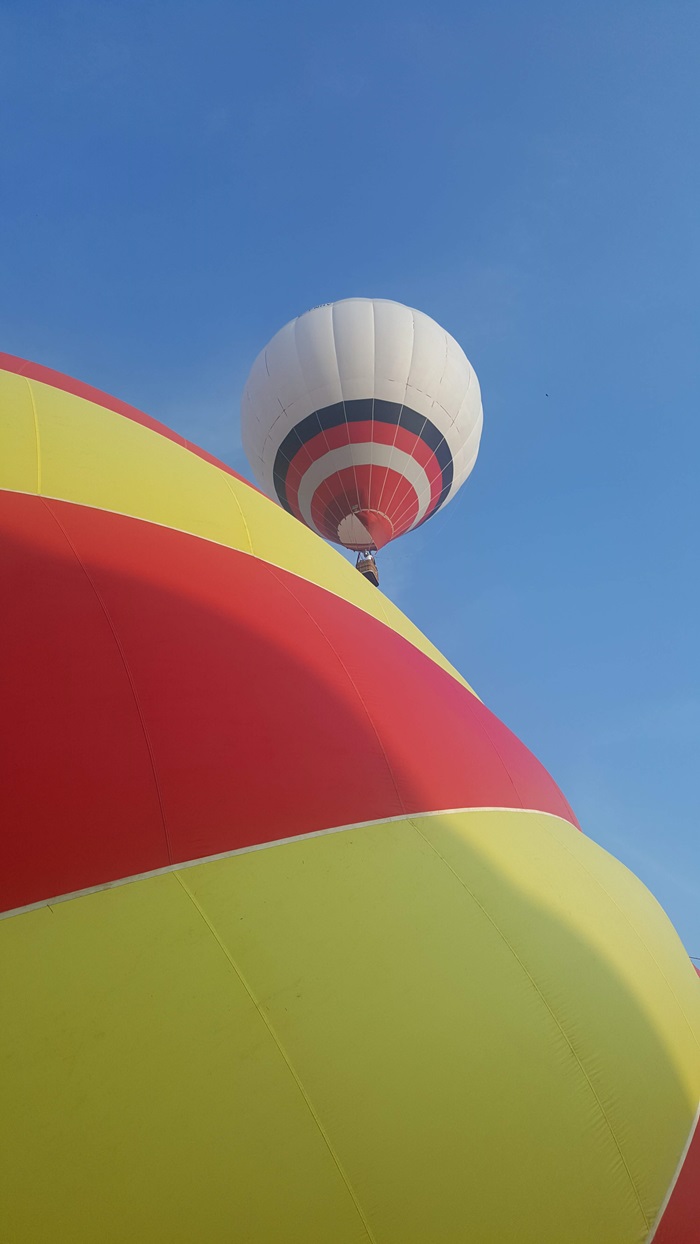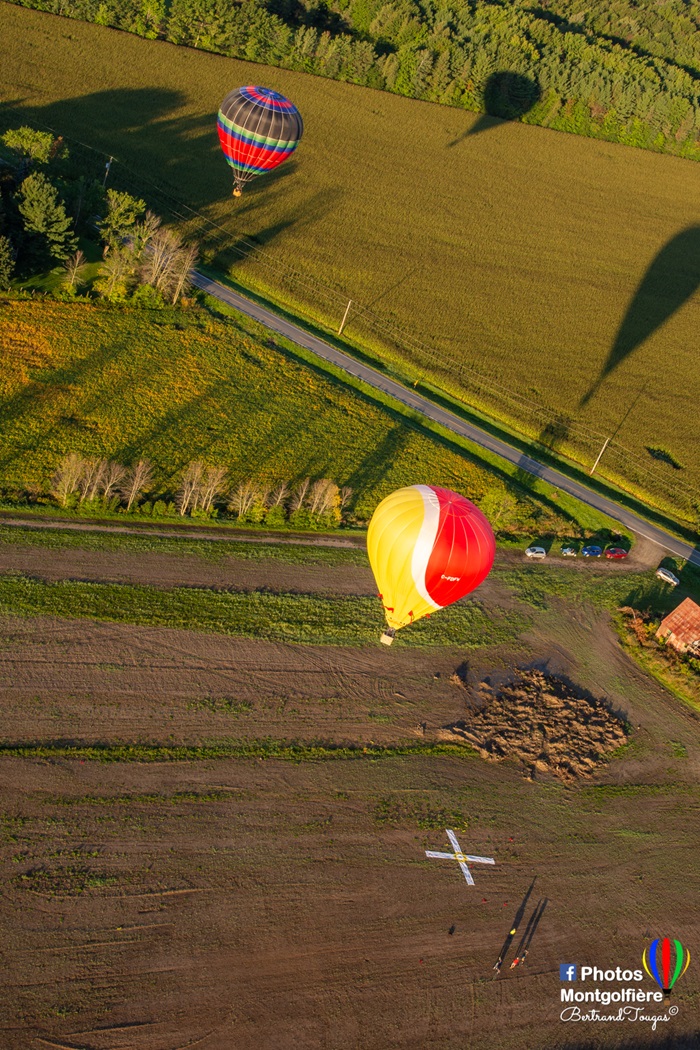Beginners guide to organising a ballooning competition Part 3: Location

By Jonathan Perron-Clow, Deputy Director 2021 and 2022 Canadian Hot Air Balloon Championships, and Member of the FAI Ballooning Commission (CIA) Public and Media Relations Sub-Committee
This article is the third in a four-part series, which aims to provide beginners with a simple guide to organising competition ballooning, written by an event organiser who started as a beginner! The series tracks the story of organising the 2021 and 2022 Canadian Hot Air Balloon Championships with commentary on the planning, the requirements, the challenges overcome and the lessons learned along the way. There are many people who could provide a more structured account and who have organised much larger events, but I am writing this precisely to show that you don’t need to have all the knowledge together at the beginning.
- Read Part 1: Balloonists
- Read Part 2: Teamwork
- Read Part 4: Resources


Pilots get together to decide where to launch from in Hawkesbury, Ontario in July 2018.
The wind direction meant opting for a launch spot to the southwest of town and
the community didn’t end up seeing balloons fly by. Credit: Jonathan Perron-Clow
In 2018, I approached leaders in Hawkesbury, Ontario, along the Ottawa river halfway between Ottawa and Montreal, to see whether we could develop a competition. Hosting a few pilots over a scorching weekend in July, our group quickly realised that heading west sent us into a treed escarpment and the prevailing winds to the east brought us to small farms with lots of power lines and then the Mirabel airport control zone. We opted to fly further south and west which meant we never were in sight of the town, reducing the appeal for the community to organise with us.
- Competitors, organisers and officials: all the right people are in place. That’s great. But where will they be flying?
How to choose a site
From the previous piece, we’ve established that finding local organisers is as important and challenging as identifying the right place to fly. There was great enthusiasm in Hawkesbury, but it wasn’t the right place. What exactly makes a good place to fly?
There can be many correct answers and all these elements are matters of degrees, so let’s enumerate some of the factors.
Good weather makes all the difference
During the 2022 World Hot Air Balloon Championship in Slovenia, all 10 flights went ahead due to good autumn weather. The weather was also great at the 2018 and 2012 Worlds I attended. More flights means more opportunities for tasks and a more competitive championship.
That takes a region and a time of year when the weather patterns are typically stable (high pressure systems with low winds and great steerage are best). It’s only possible to fly during mornings in some places due to daytime heating, which reduces the number of flight slots in the event, though mornings tend to have longer flights with more tasks and better steerage anyway.
The size of the region matters
At a minimum, 25 kilometres by 25 kilometres is a good baseline in a largely rural area with lots of open fields. As much as I’d love to host a big competition in my hometown of Ottawa, Canada, the region has grown so much since Destination Canada 1985 that short of exclusively having virtual tasks, it is unfeasible to host a competition there.
The Gatineau Balloon Festival struggles with good flying directions and landing sites. In low-wind conditions and with steerage, 25 kilometres gives the opportunity to navigate many tasks over a time period of up to two and half hours on nice mornings.
Getting a date in the calendar
Ideally, there should be plenty of places to take off from and land, taking into account the prevailing and possible winds, as well as plenty of spots to put targets. That can be helped by organising the event after most fields have been harvested, though that is already generally a busy time in most event calendars.
Ideally, you need good sites for both common and individual launches. If the area is new to ballooning, you’ll need to build relationships with landowners to let them know your intentions and what they can expect (this is true in North America, for instance).
Saint-Jean hosted the 1991 World Hot Air Balloon Championship as well as their usual festival. At the time, finding landing sites for over 100 balloons in August was not a difficult feat as the dairy farmers had plenty of cut hay fields at that time of year. Over time, many farmers have shifted to soybean and corn farming, which is not usually harvested in August.
It was even worse in June when we held our 2021 and 2022 championships. On the West side of the river, there were only three potential launch and target sites as well as our airport base of operations. We knew that the prevailing winds head East where more target sites were possible, but certainly not as many as we would like.
Competitor travel
Another final consideration is that the selected region should be accessible to the pilots you’re seeking to attract. If this is a regional event, are those who will receive invitations willing and able to make it there?
In planning competitions in Canada, we always recognise that some pilots and crews would need to travel long distances which discourages them many from attending. Not everyone is interested in making a 7000km journey every year. In our case, trying to meet in the middle would probably be limiting, but organising in ballooning centres in Alberta or Quebec gives us a baseline of competitors nearby.
If this is a national or international event, is it possible to gather competitors from further afield with an international airport to which they can ship their balloon equipment?
The 2023 Women’s Worlds were held in Northam, Western Australia (see header image) which was only close, in a relative way, for Australians. Still, women came from around the world for their championship. Providing financial resources to offset some of the travel costs and making balloons available locally can help ease these stresses. But that’s for the next piece.
How to move forwarD
When seeking an appropriate flying area, consider:
- Flying area (size)
- Take-off and landing sites available
- Weather (can you generally expect it to be good at the time of year, what are the prevailing winds like? The Ideal is for lots of steerage and calm winds.
- Access for pilots - proximity to centres with ballooning

Pilots fly into the target at the Amicale 2020 in Saint-Jean-sur-Richelieu, QC.
There’s a reason it’s Canada’s capital of ballooning: friendly landowners who are recognised for their kindness,
more space to land as the season moves along, and usually lots of steerage.
The occasional low-level jet which gives lots of speed at 1000 feet can make competition tricky.
Credit: Photo Montgolfière / Bertrand Tougas
Header image: from 5th FAI Women's World Hot Air Balloon Championship 2023, Australia. By Michelle Blackhurst.
